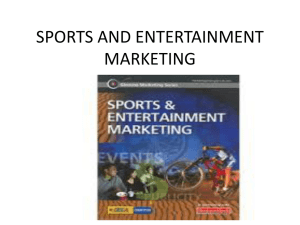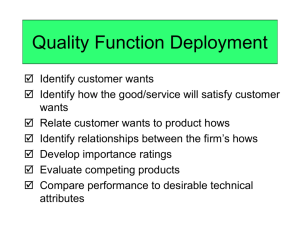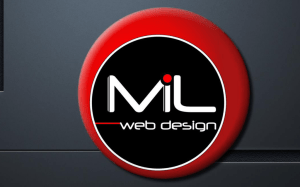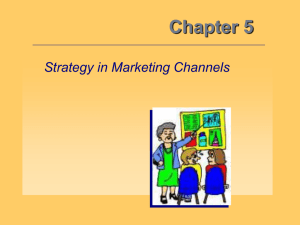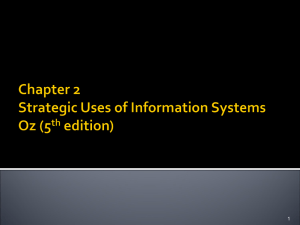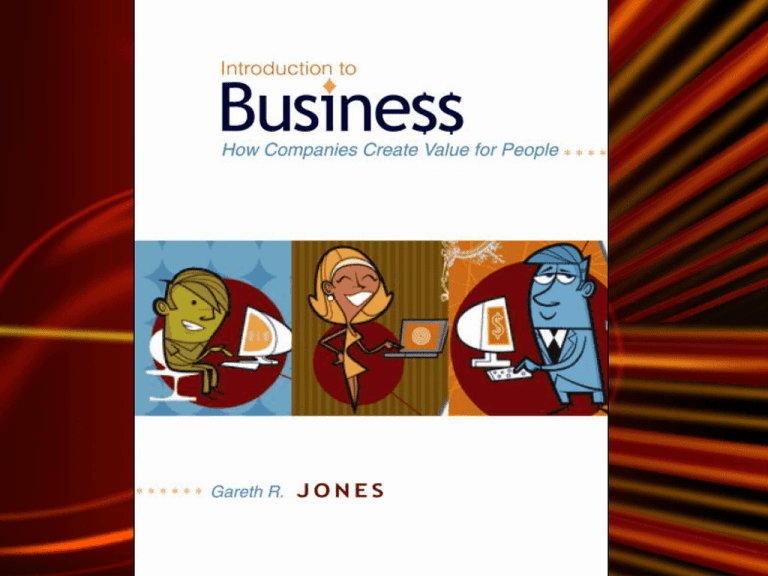
Chapter 10
Marketing and Product
Development: Creating and
Positioning Goods and Services
McGraw-Hill/Irwin
Introduction to Business
© 2007 The McGraw-Hill Companies, Inc., All Rights Reserved.
Learning Objectives
1. Explain how marketing, product development,
and sales must coordinate their activities to
align a company’s products with customer’s
needs.
2. Describe how marketing research can identify
customer needs.
3. Identify the four main elements of the
marketing mix and discuss how the marketing
mix is used to differentiate a company’s
products.
10 - 3
Learning Objectives
4. Describe how marketing research can identify
the needs of different customer groups and
market segments.
5. Differentiate between the three main
approaches to market segmentation.
10 - 4
What is Marketing?
• Marketing
- an organizational function and a set of
processes for creating, communicating, and
delivering value to customers and for
managing customer relationships in ways
that benefit the organization and its
stakeholders
10 - 5
Marketing, Product Development,
and Sales
• Customer needs
- consumer needs that can be satisfied by
the qualities and features of a good or
service
• Product development
- the set of technical, scientific, and
engineering processes involved in creating
new or improved products to better satisfy
customer needs
10 - 6
Question?
What is the use of techniques to inform
customers about the value of a
company’s products?
A. Sales
B. Revenues
C. Advertising
D. Promotion
10 - 7
Marketing, Product Development,
and Sales
• Sales
- the development and use of techniques to
inform customers about the value of a
company’s products
in order to persuade
them to buy them
10 - 8
Marketing, Product Development,
and Sales
• Customer relationship management
- the process of tracking the demand and
satisfaction of customers in an effort to
develop products they will want to buy on
an ongoing basis
10 - 9
How Marketing, Product Development, and Sales
Cooperate to Get Products to Customers
Figure 10.1
10 - 10
Marketing and the Business Vision,
or Mission
• Business vision (business mission)
- a brief statement of a company’s business
model that tells stakeholders why the firm is
in business, how it intends to satisfy
customer needs, and why it will satisfy their
needs better than its competitors
10 - 11
The Product Life Cycle
• Product life cycle
- the typical sequence of changes in demand
for a product that occur over time
10 - 12
A Product Life Cycle
Figure 10.2
10 - 13
Marketing Research
• Marketing research
- the systematic search for information that
uncovers met and unmet customer needs,
the different needs of different customer
groups, and whether or not a product’s
marketing mix appeals to customers
10 - 14
Identifying Customer Needs
through Marketing Research
Figure 10.3
10 - 15
Use Focus Groups
• Focus group
- a group of people brought together to share
their thoughts and feelings about a
particular product
and why it may or
may not meet their
needs
10 - 16
Adopt a Customer-Oriented
Approach
• Focus on why existing products failed to
meet customer needs as well as how future
products should be designed
10 - 17
Involve Leading Customers
• Leading customers
- companies that improvise their own
solutions to business problems because no
products currently exist that can do so
10 - 18
Become a Leading Provider
• Leading providers
- people or companies that believe their new
products will better satisfy customer needs
even though they have no sure proof of this
10 - 19
Question?
What is the process of examining the
products of one’s competitors in depth in
order to figure out what makes them
successful?
A. Corporate espionage
B. Competitive intelligence
C. Reverse engineering
D. Null engineering
10 - 20
Reverse Engineer a Product
• Reverse engineering
- the process of examining the products of
one’s competitors in depth in order to figure
out what makes
them successful
10 - 21
Identifying Customer Groups and
Segments
• Customer groups
- groups of people who have a similar need
for a particular product because the product
satisfies several different kinds of needs
10 - 22
How Customer Groups and Market
Segments Are Identified
• Primary product need
• Price range
• Other differentiating characteristics
10 - 23
Identifying Customer Groups
Figure 10.4
10 - 24
Toyota’s Product Lineup
Figure 10.5
10 - 25
Choosing Markets to Serve
• Mass marketing
- selling of a mass-produced product to all
customers
• Multiple-segment marketing
- different models of a product are made and
sold to different customer groups
• Focused marketing
- developing products for customers in one
or two targeted market segments
10 - 26
Three Approaches to Market
Segmentation
Figure 10.6
10 - 27
Dell’s Main Customer Groups
Figure 10.7
10 - 28
Differentiating Products via the
Marketing Mix
• Product differentiation
- the process of setting a product apart from
its competitors by designing and marketing
it to better satisfy customers’ needs
10 - 29
Differentiating Products via the
Marketing Mix
• Marketing mix
- the combination of a product’s qualities and
features, its price, the way it is promoted
and sold, and the places at which it is sold
10 - 30
Components of the Marketing Mix
Figure 10.8
10 - 31
Product Branding and the
Marketing Message
• Marketing message
- a product-related message the firm’s
marketing department sends to customers
about how and why a product will better
satisfy their needs
10 - 32
Product Branding and the
Marketing Message
• Product branding
- using a unique name, design, symbol, or
other element to differentiate a product
from its competitors
• Brand name
- the specific name, sign, or symbol a
company uses to distinguish and legally
protect the identity of its products
10 - 33
Product Branding and the
Marketing Message
• Brand loyalty
- the tendency of customers to consistently
purchase a particular product over time
because they believe it can best satisfy
their needs
• Product positioning
- the process of customizing or tailoring a
product to a specific market segment
10 - 34
Products
• Creating real product differences
• Creating perceived product differences
• Packaging
What products are available at the
Homestar-runner store
10 - 35
Price
• Target price
- the price a typical customer will be willing to
pay for a product with a particular set of
qualities and features
10 - 36
Promotion
• Advertising
• Sales promotions
• Public relations
• Personal selling
10 - 37
Promotion
• Promotion
- the way in which a company advertises,
announces, publicizes, and pushes its
products
• Promotional mix
- the combination of advertising, sales
promotions, public relations, and personal
selling used to reach and persuade
customers to buy a product
10 - 38
Promotion
• Advertising
- the paid, nonpersonal promotion of a
company’s goods and services using mass
media to influence consumers
• Sales promotion
- nonpersonal, persuasive efforts designed
to boost a company’s sales immediately
10 - 39
Promotion
• Public relations
- the practice of conveying messages to the
public through the media to influence
people’s opinions about the company and
its products
10 - 40
Promotion
• Personal selling
- direct, face-to-face communication by
salespeople with existing and potential
customers to promote a company’s
products
10 - 41
Place
• Place
- the distribution and sales channels used to
get both a product and its marketing
message to the customer
10 - 42
Different Types of Marketing
Channels
Figure 10.9
10 - 43
Video: 3M Greptile Grip Golf Glove
•
•
3M Corporation is a highly diversified
multi-million dollar company known for
technology and innovation. Its entrance
into the sports industry represents an
interesting process in product
development and successful marketing.
How does 3M differentiate its sports
brand from its other product lines?
10 - 44

